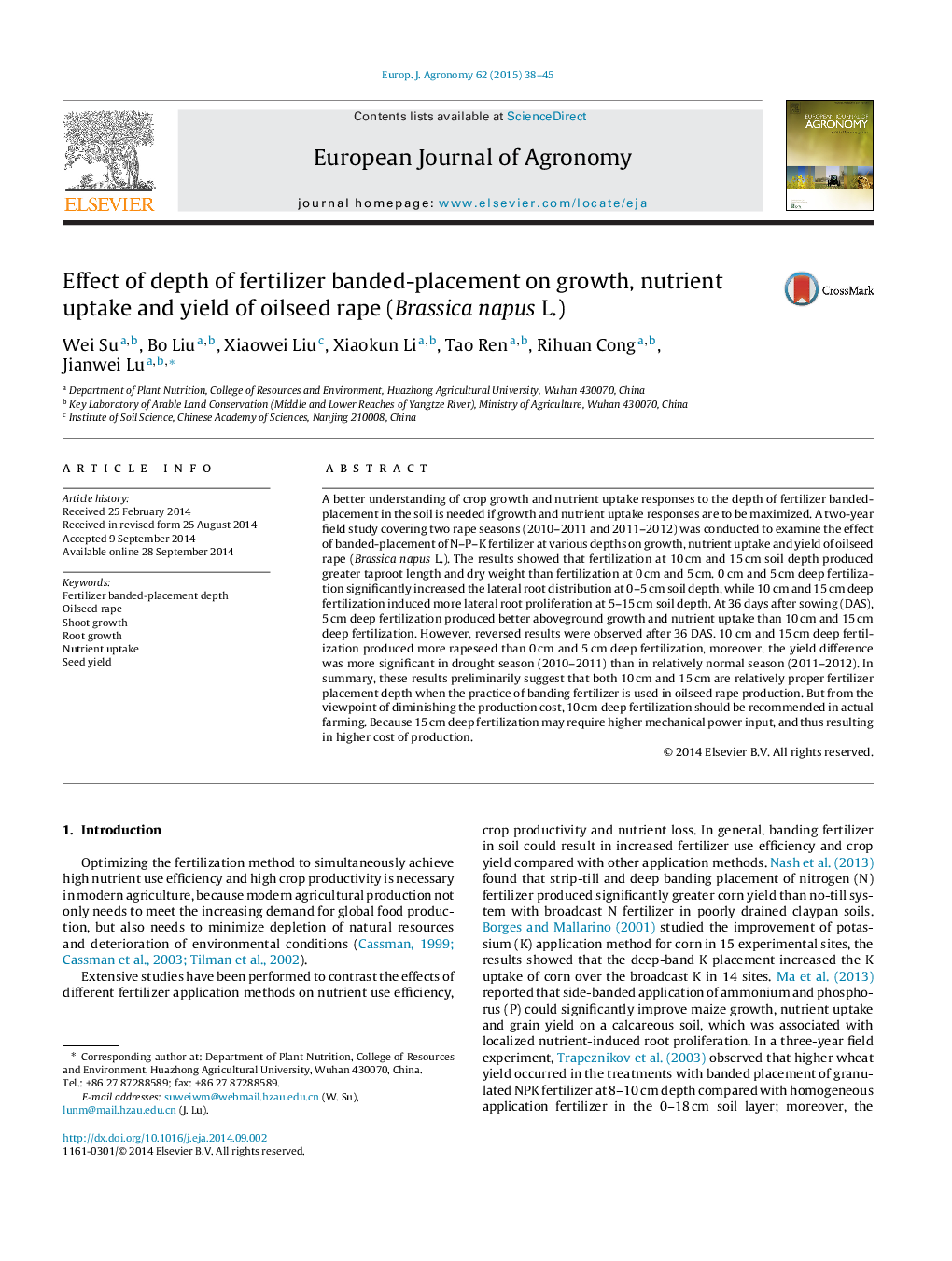| Article ID | Journal | Published Year | Pages | File Type |
|---|---|---|---|---|
| 4508843 | European Journal of Agronomy | 2015 | 8 Pages |
•Deeper fertilization caused more lateral root proliferation in the deeper soil layer.•Increasing depth of fertilizer placement improved growth of oilseed rape.•Increasing depth of fertilizer placement increased nutrient uptake of oilseed rape.•Deeper fertilization produced higher rapeseed yield.
A better understanding of crop growth and nutrient uptake responses to the depth of fertilizer banded-placement in the soil is needed if growth and nutrient uptake responses are to be maximized. A two-year field study covering two rape seasons (2010–2011 and 2011–2012) was conducted to examine the effect of banded-placement of N–P–K fertilizer at various depths on growth, nutrient uptake and yield of oilseed rape (Brassica napus L.). The results showed that fertilization at 10 cm and 15 cm soil depth produced greater taproot length and dry weight than fertilization at 0 cm and 5 cm. 0 cm and 5 cm deep fertilization significantly increased the lateral root distribution at 0–5 cm soil depth, while 10 cm and 15 cm deep fertilization induced more lateral root proliferation at 5–15 cm soil depth. At 36 days after sowing (DAS), 5 cm deep fertilization produced better aboveground growth and nutrient uptake than 10 cm and 15 cm deep fertilization. However, reversed results were observed after 36 DAS. 10 cm and 15 cm deep fertilization produced more rapeseed than 0 cm and 5 cm deep fertilization, moreover, the yield difference was more significant in drought season (2010–2011) than in relatively normal season (2011–2012). In summary, these results preliminarily suggest that both 10 cm and 15 cm are relatively proper fertilizer placement depth when the practice of banding fertilizer is used in oilseed rape production. But from the viewpoint of diminishing the production cost, 10 cm deep fertilization should be recommended in actual farming. Because 15 cm deep fertilization may require higher mechanical power input, and thus resulting in higher cost of production.
